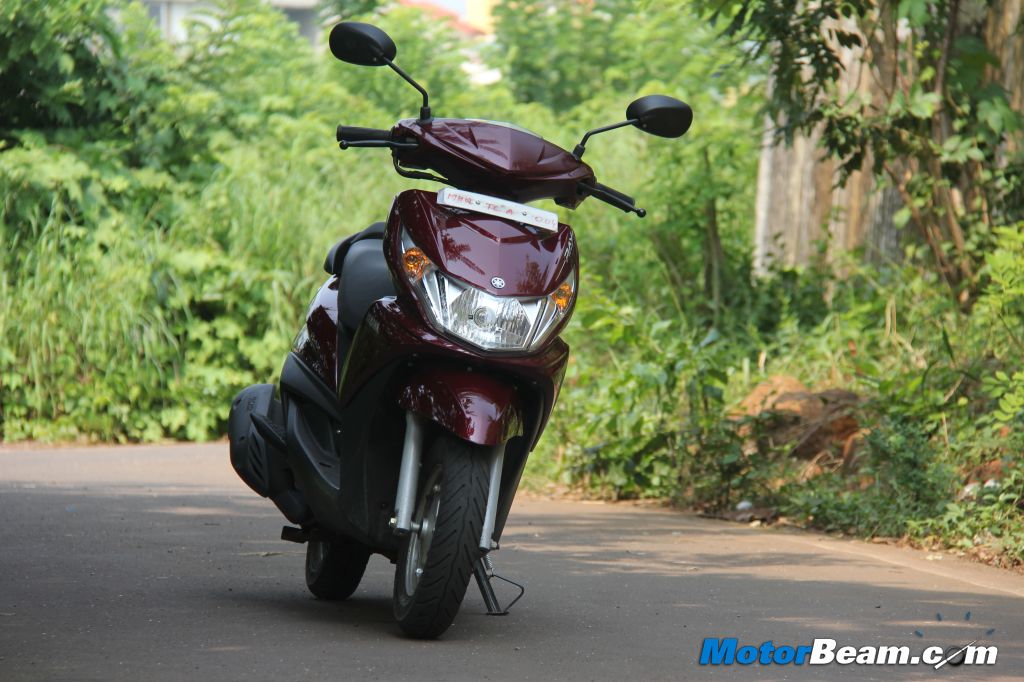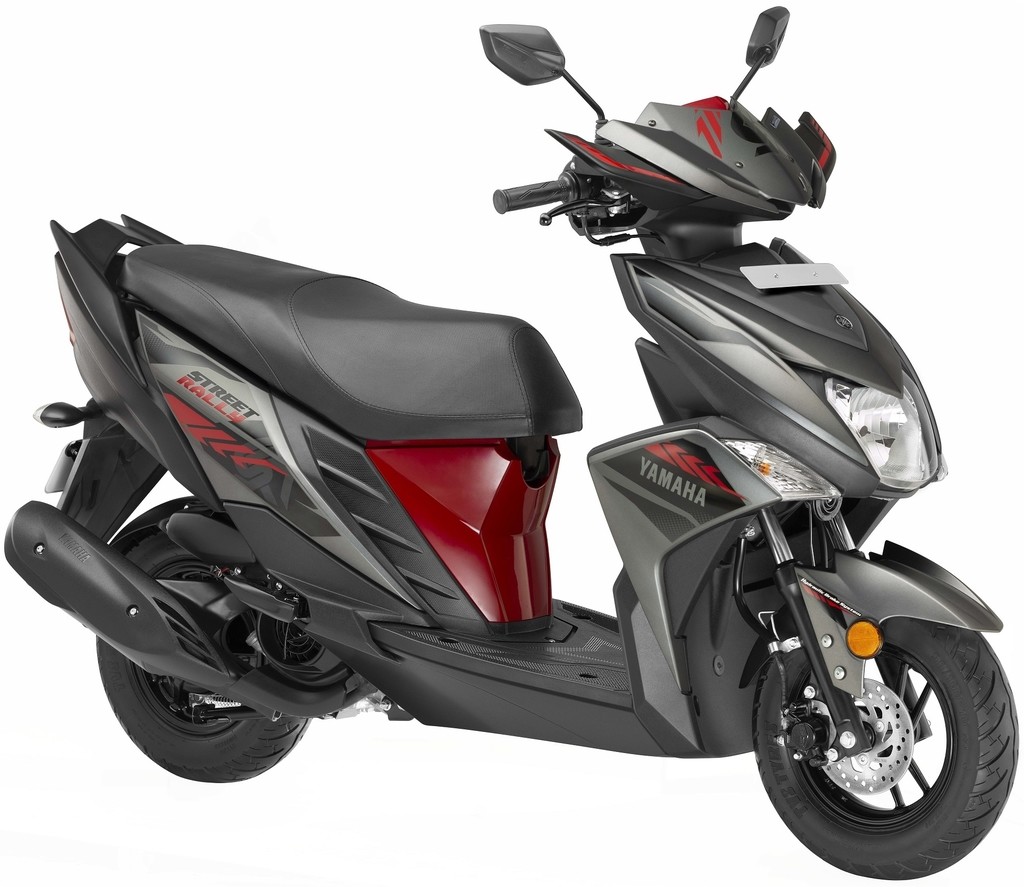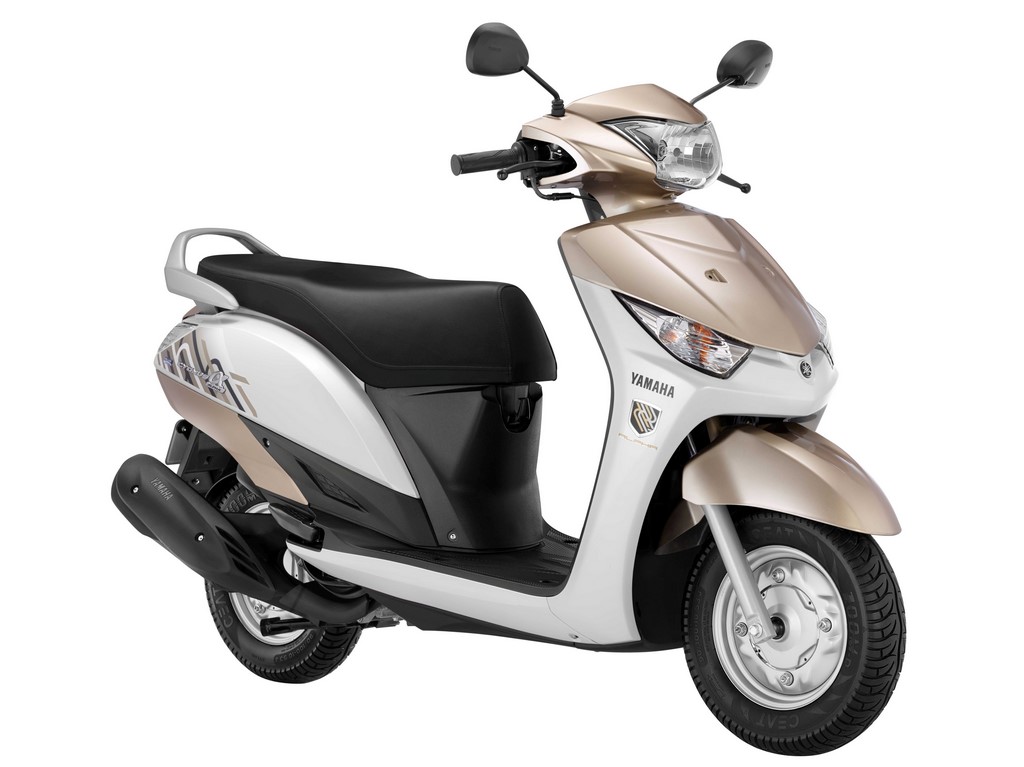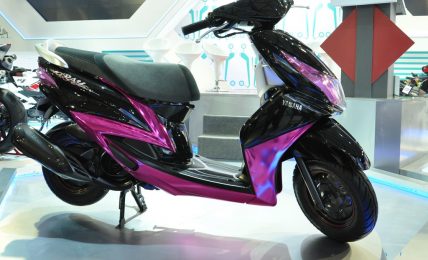
Yamaha Ray Review
Bike Tested: 2012 Yamaha Ray
Price OTR Mumbai: Rs. 55,000/-
Scooters have all of a sudden come into focus in the Indian market, so much that every 2-wheeler manufacturer is launching more of them. Just recently Hero MotoCorp sold more scooters than TVS in the domestic market and the world’s largest 2-wheeler manufacturer is said to be boost its scooter production. The latest entrant in the scooter segment is Yamaha with the Ray. The Japanese bike company is betting big on the scooter market and expects the Yamaha Ray to boost volumes for them. The Yamaha Ray has a lot going for it and we couldn’t resist getting our hands on this scooter. So let’s find out if the Ray has the Yamaha DNA in it!
[flickr size=”center” float=”medium”]http://www.flickr.com/photos/motorbeam/8082263243/[/flickr]
Styling – First look at the Yamaha Ray and you immediately notice how short are its dimensions, the low stance, and the very familiar edgy design panels which start from headlight to the tail light. It has been garnished with graphics, sharp lines and slashes on the side panels which join into the tail light flawlessly. The sleek exhaust is finished in black and comes with heat shield which has vents scooped out on it. The headlight dominates the front with its sheer size and has integrated turn indicators. According to Yamaha, the ‘v-cut’ shape at the front gives it a shape which looks like ‘jewellery’. We couldn’t agree more on it as it almost looks like a necklace from a certain angle. The three different colors used on the Yamaha Ray, the grey-colored forks and the body color gets all the attention.
[flickr size=”center” float=”medium”]http://www.flickr.com/photos/motorbeam/8082253846/[/flickr]
Instrument Cluster and Switch Gear – The triangular instrument cluster blends in with the overall design. It uses clear lens for superior visibility, be it day or night. At the top, there is the analog speedo-meter with trip meter in the middle. The solitary turn indicator lights and the high beam indicator give a digital feel when lit. The lower part has the fuel gauge. The needles used in these gauges are very distinct and finicky; the speedo-meter needle hops around while it indicates the current speed. Switch gear is of good quality and has a positive feel to every click and doesn’t feel cheap like its rivals.
[flickr size=”center” float=”medium”]http://www.flickr.com/photos/motorbeam/8082252886/[/flickr]
Ergonomics – The Yamaha Ray has a very comfortable seating position, upright and not so wide. Saddle height is really low which comes as a good news for short people. The seat is well cushioned; it’s a perfect balance for comfort on short trips and will help in long journeys as well. The grab handle at the back is a bit of stretch and small in size. Rear view mirror’s are very easy to adjust and offer very wide view of what is behind.
[flickr size=”center” float=”medium”]http://www.flickr.com/photos/motorbeam/8082255214/[/flickr]
Performance and Gearbox – A feather touch to the self-start and the 113cc 4-stroke scooter comes to life in a very smooth manner; start up sound is very soothing to the ears. The Yamaha engine produces 7 HP of power at 7500 RPM and 8.1 Nm of torque at 5000 RPM. Since the Yamaha Ray weighs just 104 kgs, the scooter feels peppy and acceleration is brisk up to 60 km/h despite a pillion on-board, after which the scooter struggles to reach 75 km/h. Power delivery is peppy and the throttle responds to riders inputs quickly. There’s hardly any lag from the CVT gearbox in the beginning, which gives it good low end torque and mediocre mid-range. Performance is not the party piece of this scooter, but it has excellent drivability in the city and fuel efficiency.
[flickr size=”center” float=”medium”]http://www.flickr.com/photos/motorbeam/8082259987/[/flickr]
Ride, Handling and Braking – Outright performance may not be Yamaha Ray’s party piece, but the handling is. It rides on a common set of 90 x 100 tires and 10-inch wheels, but has impressive grip levels. The chassis is stiff and the engine being a stressed member; it offers massive confidence when pushed into corners. The telescopic suspension geometry is well executed and it gives an excellent blend of cornering ability and ride quality. Ride quality at the front is stiff and you tend to feel the bumps at low speeds but as speed builds up, the suspension stays flat. The pillion is always comfortable because the rear suspension is slightly soft.
[flickr size=”center” float=”medium”]http://www.flickr.com/photos/motorbeam/8082252512/[/flickr]
The Yamaha Ray sets a benchmark when it comes to handling because of the reassuring Yamaha DNA it carries along. The 130mm drum brakes at the front and rear do a splendid job of slowing you down from higher speeds. Thanks to the compact dimensions and low kerb weight, it stops without any sideways action, but emergency braking will see the front forks diving in. Manoeuvring in the city is a hassle free job, u-turn radius is short and it’s very nimble and agile in the city, thanks to the short wheelbase and re-assuring front suspension which doesn’t even let you down while making quick high speed lane changes. High-speed stability is excellent and there is very little wind blast.
[flickr size=”center” float=”medium”]http://www.flickr.com/photos/motorbeam/8082262091/[/flickr]
Miscellaneous – The low mounted headlight has a good wide spread, but on those lonely dark highways, high beam doesn’t seem sufficient enough. The 128 mm ground clearance may seem low on paper, but with stiff suspension, we didn’t scrap the belly anywhere despite pillion on-board. Fit and finish is good, but we did find the brake levers at the front on the fragile side and lots of exposed bolts. The under seat storage of 15.5-litres doesn’t run deep and thus you can’t store a full face helmet. It is only good for keeping knick knacks or a small helmet. The hook which is placed above the floor board in most scooters makes it way on the top in the Yamaha Ray; convenient if you are carrying edible stuff, so your feet don’t touch them and also useful if you are carrying longer bags. The leg shield does protrude sometimes when you exit the scooter in a hurry, all though it will vary with different people with different sizes. Side stand and rear view mirrors come as standard fitment. Since this scooter will help Yamaha pick up volumes, we hope the limited number of service stations would be capable of handling the demands and provide quality service as well.
[flickr size=”center” float=”medium”]http://www.flickr.com/photos/motorbeam/8082255298/[/flickr]
Conclusion – The long awaited Yamaha scooter finally arrives and it offers its customers a good proposition with a quality product and value for money price tag. The Yamaha DNA automatically gives it the best in class handling and dynamics package. Scooter enthusiasts are disappointed but we urge Yamaha to offer powerful scooters in the future. But right now, we think the Yamaha Ray is the best entry level scooter you can buy in the market today.
[flickr size=”center” float=”medium”]http://www.flickr.com/photos/motorbeam/8082262991/[/flickr]
What’s Cool
* Ride quality
* Handling
* Fuel economy (45 km/l)
What’s Not So Cool
* Under-seat storage
* Blunt steel wheels
[flickr size=”center” float=”medium”]http://www.flickr.com/photos/motorbeam/8082262531/[/flickr]
Yamaha Ray Specifications
* Engine: 113cc, air-cooled, 4-stroke, SOHC, 2-valve
* Power: 7 HP @ 7500 RPM
* Torque: 8.1 Nm @ 5000 RPM
* Transmission: V-belt automatic
* Top Speed: 75 km/h
* Fuel Consumption: 45 km/l
* Fuel Type: Petrol
* Suspension: Telescopic forks (front), Unit swing (rear)
* Tires: 90/100-10 53J (tube type)
* Brakes: 130mm Drums
Yamaha Ray Dimensions
* Overall length x width x height: 1835 mm x 675 mm x 1075 mm
* Wheelbase: 1270 mm
* Ground clearance: 128 mm
* Seat Height: 760 mm
* Underseat Storage Volume: 15.5-liters
* Fuel Tank Capacity: 5-liters
* Kerb Weight: 104 kgs




